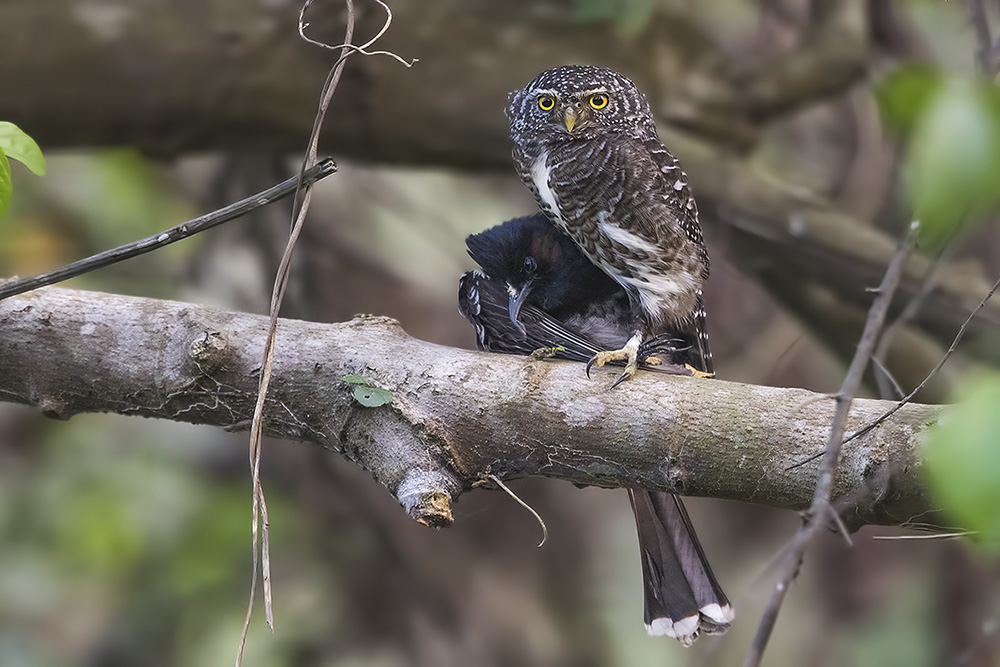
In February 2020, I was on a birding trip to Manas Tiger Reserve in Assam with my wife. On the evening of 24th, I was waiting silently for over two hours to get a glimpse of the rare and elusive Black-tailed Crake while dusk was setting in.
Suddenly, I realized that several birds were mobbing and calling frantically at something. And there it was, one of the smallest and cutest birds of prey, the Collared Owlet. It had just killed a much larger Red-vented Bulbul (about 20cm in size, while the owlet is just 16cm). The bulbul was still alive and the owlet waited for sometime on the tree. It was still in the process of completing the kill. Then it flew to a different tree and soon disappeared. The alarm calls of the other birds followed every movement of the owlet.
I realized why this tiny owlet is such a terror among the smaller birds. The ease with which it killed the bulbul and carried it speaks immensely of its hunting skill and strength.
The Collared Owlet (Glaucidium brodiei) is a tiny brown owl of the mountains and foothills in the Himalayas, east to China and Taiwan, south through Malaysia, Sumatra and Borneo (source: Owl Pages). The Collared Owlet is diurnal and crepuscular (active at dawn and dusk). Interestingly, the bird has black patches at the back of the neck to create an occipital face, also called “false eyes”.

 CI is a non-profit, non-commercial portal that aims to facilitate wildlife and nature conservation by providing reliable information and the tools needed to campaign effectively.
CI is a non-profit, non-commercial portal that aims to facilitate wildlife and nature conservation by providing reliable information and the tools needed to campaign effectively.



Chosen as 'Picture of the Week'
The Collared Owlet is diurnal and crepuscular (active at dawn and dusk). Interestingly, the bird has black patches at the back of the neck to create an occipital face, also called “false eyes”.